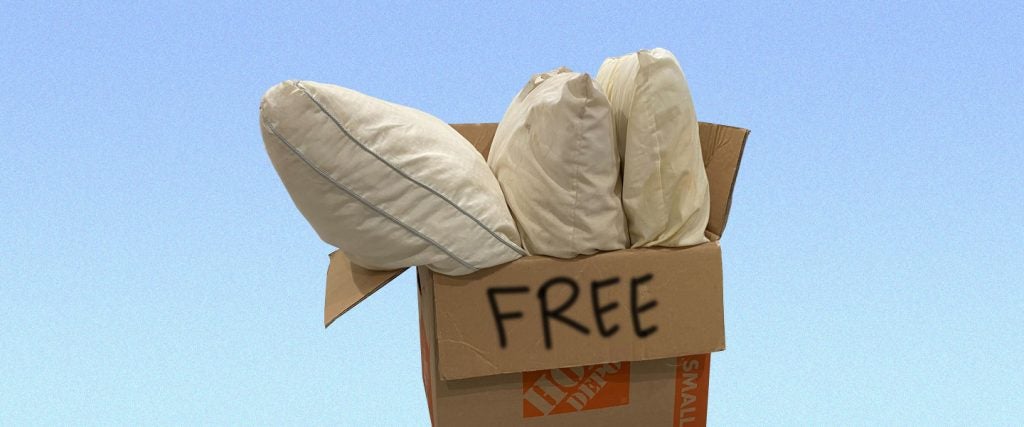It wasn’t until I started shopping for a new pillow three years ago that I realized the pillow I was about to replace came from my parents’ house. Which means it was the same pillow I’d used through high school, college and several years after college. Now, before you come at me about my pillow loyalty, just know that I’m working with a very delicate sleep situation here. I’m not about to just fuck around and “try” a new pillow one night.
Unfortunately, I murdered the longest tenured, most compatible pillow I’ve ever had after an ill-fated attempt at eating soup in bed. Now I’ve got a new pillow, but have no idea what I’m supposed to do with my old one. I can’t just throw it out, right?
According to Stacy Lewis, interior designer for Eternity Modern, there are a surprising number of ways to repurpose an old pillow. And by and large, most people choose their pets as the recipient of old pillows. “Whether for your own pet or to donate to an animal shelter,” Lewis explains, “a pet’s bed can be a source of comfort for them, especially if they like to sleep with something that smells like you.”
“You can take the stuffing out, sew on a sturdy cover, and viola, you have a ‘new’ pet bed,” Lewis continues. At the very least, if you’ve got one of those dogs whose idea of fun is to disembowel its stuffed chew toys, keep the pillow stuffing for refills.
Reusing an old pillow’s worn stuffing to make a few small, more compact pillows for human use is an option as well. “One way to repurpose old bed pillows is to place them in old pillow cases and use them as outdoor or covered patio furniture,” says Carol Gee, author of Gilded Pearls, a memoir about “growing up in a house where everything was reused, repurposed or recycled.” Gee says you can also cut old bed pillows in half, then hand-stitch the open edge to create two brand new throw pillows.
But if you’re like me and neither a seamstress nor the owner of outdoor furniture or pets, don’t worry. Lewis still has a few other suggestions. Old pillows make for handy moving cushions whenever you need to transport something breakable, she says, “or use them as insulation in the winter, if you’ve got any drafty doors or windows.”
And if your old pillow belongs nowhere in the house, but you still want to keep it around, you can always use it as a knee pad in the garden. “Gardening always takes a toll on my knees,” Lewis says. “Old pillows are perfect as a knee cushion. Just sew them into waterproof fabric to slip under your knees while you transform that backyard dirt patch into a flower or vegetable garden.”
If nothing else, you can always recycle a decades-old soup-covered pillow that’s just taking up space. “The best way to dispose of an old pillow will vary depending on the material it’s made from,” says Robert Pagano, co-founder of Sleepline.com. So long as it’s not stained with any bodily fluids, oil or grease, “any pillow made from synthetic materials like polyester can be recycled at your local textile recycling plant.”
And if your pillow is made from “natural materials such as feathers or wool,” Pagano says it can even be composted. All you have to do is slice your ol’ sleeping buddy open, and dump its innards into the compost bin to rot in the ground.
Not a bad way to go out, if you ask me.

